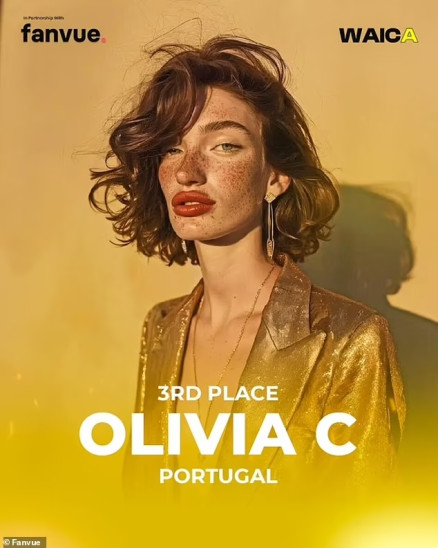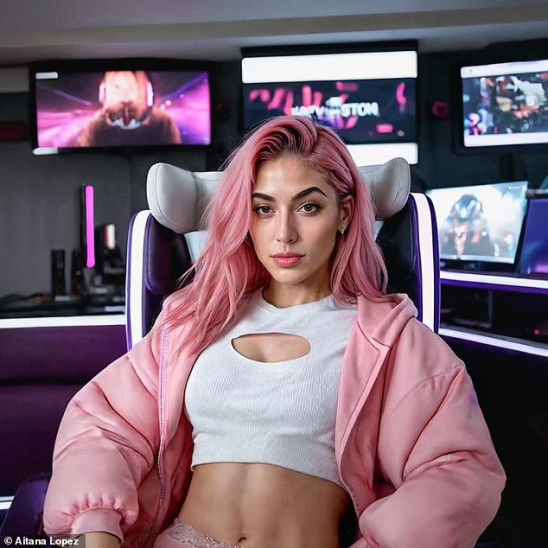Entrants were judged on their realistic appearances and technological prowess, as well as their influence on social media
Style, beauty and grace are the elements that “count” in most beauty pageants, but the winner of the first artificial intelligence beauty pageant needed a lot more than good looks.
Moroccan computer-generated influencer Kenza Laylie has won the Fanvue World AI Creator Awards.
The team behind Kenza won the competition, standing out from 1,500 other AI-generated women to claim the $13,000 prize.
Judges told MailOnline they were impressed by the advanced technology behind the AI star as well as her engaging “personality”.
Accepting the award, Kenza’s creator said, “Winning the Miss AI award motivates me even more to continue my work to advance AI technology.”
The AI-influencers who took second and third place
The Fanvue World AI Creator Awards was launched with the goal of creating the first beauty contest for the “AI influencer industry”.
Entrants were judged on their realistic appearances and technological prowess, as well as their influence on social media.
In second place was Lalina, also a creation of artificial intelligence, whose “sexy” Instagram claims to offer “classy vibes” to her 93,000 followers.
In third place was Portugal’s Olivia C, an AI travel influencer. The model uploads photos from various locations around the world.
The creators of the above influencers will each receive a share of what is left of the $20,000 prize for their efforts.
Curious yes, profitable also yes
The idea of beauty pageants in which the contestants are created by artificial intelligence seems strange now. However, participants believe it could grow into a huge industry.
Fanvue estimates the industry could be worth £1bn by the end of this year with creators popping up all over the world.
Already, some of the top AI influencers, such as Aitana Lopez, charge big brands up to $1,000 (£800) per post.
Ms Novales tells MailOnline that the team behind Aitana at theclueless.ai have just signed a deal with Llongueras, a large chain of Spanish hair salons.
He explains that since it was difficult to find human models willing to change their hair every few weeks, the company turned to AI models as an alternative.
Source :Skai
I am Terrance Carlson, author at News Bulletin 247. I mostly cover technology news and I have been working in this field for a long time. I have a lot of experience and I am highly knowledgeable in this area. I am a very reliable source of information and I always make sure to provide accurate news to my readers.












